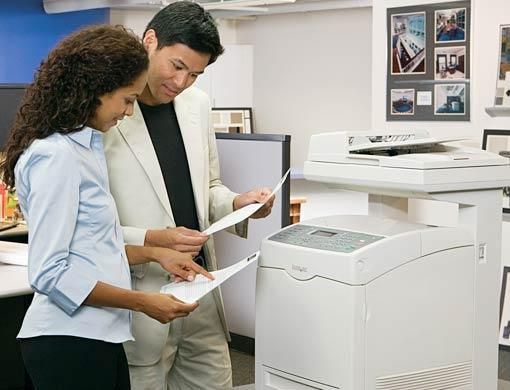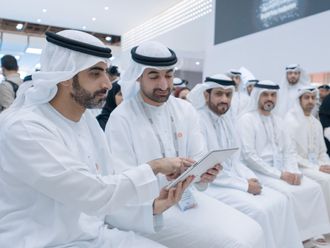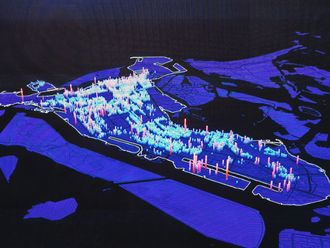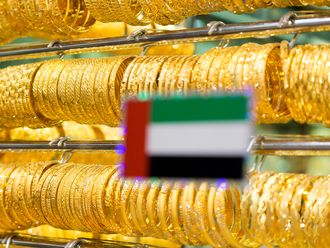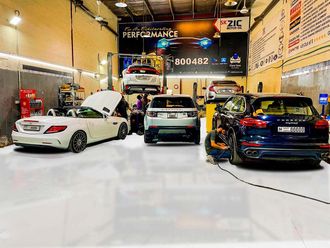Experts say lower running costs and increased speed will be the outstanding features of MFDs of the future.
Most businesses aim to save energy, time and space and multi-function office systems can help them in their quest.
Multi is the buzz word defining technology today — whether it is multi-tasking, multi-purpose, multi-use or multi-function — the idea is to control everything with a single device. Nowhere is this more evident than in the office automation industry, which has undergone a revolution with the introduction of multi-function office systems.
Multi-function devices in work spaces combine the functionality of several pieces of office equipment such as the printer, scanner, fax and copier, into a single machine. Businesses around the world embraced these devices in an effort to streamline office processes and increase productivity.
In the past, several different devices were needed to cover a typical company's needs. The solution to spiraling running costs and office space limitations was to combine all these into a single machine. Gurmeet Singh, Managing Director of Pixel Digital Systems LLC, a company that specialises in office automation and IT solutions says, "As industries continued to grow, and the need for more efficient office management became increasingly important to save on space and costs, the MFD (multi-functional device) concept provided small to large scale businesses with the option to employ a single piece of equipment that is capable of performing several office functions."
When introduced to the market, the typical MFD was a basic piece of machinery that incorporated three to four devices. Today, MFDs have evolved into sophisticated machines that can feature up to seven functions, along with other smart features that assist with office processes.
Jai Shankar, Marketing Manager, Printing and Solutions Division, Brother Gulf, says, "When we launched our first monochrome laser MFD, it had basic features of print, copy, scan and fax. However, MFDs today are more user-friendly with convenient features such as wireless connectivity, network ready options, automatic document feeding, electronic print meters and direct print/scan from USB functions."
The features that MFDs offer today are sophisticated, and have been designed to streamline business activities and enhance productivity. Most devices now offer sophisticated touch-screen interfaces which aid the printing process, and offer the user the option of handling print jobs directly from the device.
Software applications have also been developed to create server-based applications for the MFD. These can then be configured for the MFD's touch-screen user interface. This technology brings about endless possibilities for businesses. "Using this interface, workers can enter a password or use a secure smart card at the MFD and access a set of features and options designed for their business needs," explains Smita Bhargava, Product Marketing Manager, Xerox. "For example, a hospital could customise the system's touch-screen to help better manage patient forms. By touching an icon on the display, a healthcare worker could access the hospitals web-based document management system and browse a list of patient forms."
WiFi connectivity has also been introduced to MFD technology. WiFi enabled MFDs allow multiple users access to a cable-free print environment. However, due to security concerns, this feature has not gained the popularity that was expected. "In business segments, security is of higher importance than cables, so the idea of WiFi business MFDs has not taken off in the way that some analysts imagined," says François Feuillet, General Manager Lexmark International Middle East.
In addition to the considerable cutbacks on equipment and operating costs, the varying features on these devices offer numerous advantages to businesses. "MFDs offer advanced features such as scan to emails, document archiving and document management functionalities and security, thereby increasing the level of efficiency in an office environment," says Singh.
MFDs also offer ecological advantages; in a day and age where society is concerned with protecting the environment, the duplex printing feature on these devices offer an ecologically conscious solution. "Duplex printing has now become a preferred feature by many organisations due to its eco-friendly print processes, which save on paper and printing costs," says Shankar.
In addition to MFD devices that are designed for business purposes, there are also devices that are for the consumer market. Consumer MFDs are generally used to print personal documents, graphs and photos, and to scan documents and photos to be used in projects or web designs. The main difference between MFDs aimed at the business and consumer markets lies in the type of ink technology that is used.
Feuillet explains,"Business users need output fast, and laser technology provides high quality output at a greater speed than the inkjet MFDs. In addition, the high yield supplies provide lower cost per page. On top of this, the scan devices and in-built technology meet the requirements of our business customers that need integration into their networks and systems. Home consumers need more accurate colour capabilities for the printing of photographs, with lower specification on scanning and copying."
Looking to the future of the MFD, experts say that there are many prospective changes. "Lower running costs and faster speeds are expected to be standout features of future MFDs," says Khalil El-Dalu, General Manager, Epson Middle East. "There will also be more wireless connectivity with high security features over the network for business applications."
The ecologically friendly MFD is also likely to become more prominent according to Singh. More and more manufacturers are taking this approach on board, and considering the consequences these devices may have on the environment.
"We are seeing the start of another technological revolution as far as the MFDs are concerned, which involve the adoption of 'green technologies', from the equipment manufacturing to its disposal," says Singh.
Greater value for money and colour MFDs are also the future according to Shankar. Colour laser MFDs are going to be the future, with a higher presence of these products being felt at the mass market level. "With manufacturers offering greater value for money, office administrators and home users are rapidly becoming aware of the extensive advantages of utilising space-saving MFDs that offer features such as better print speeds and larger workgroup connectivity at an affordable price," says Shankar.


